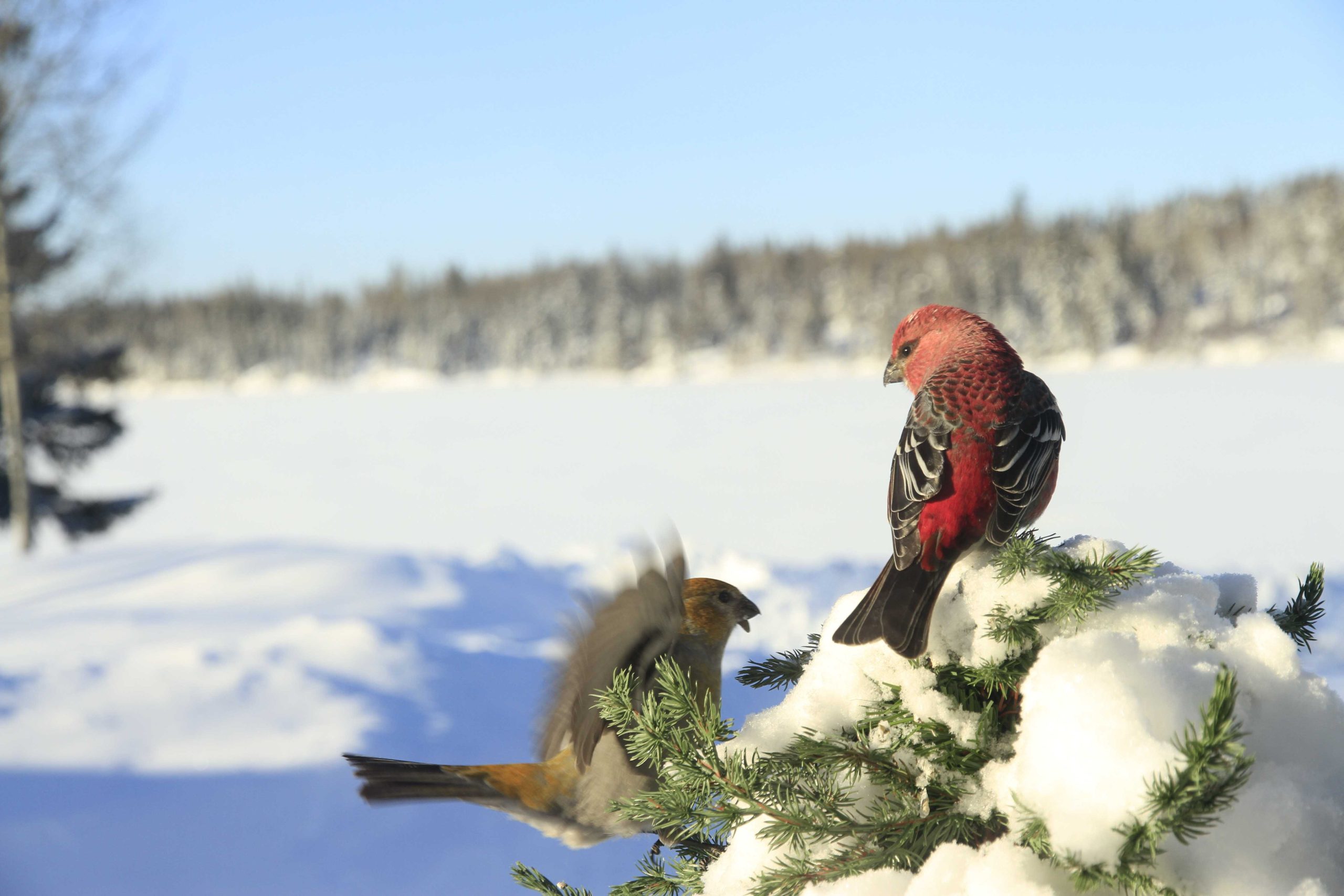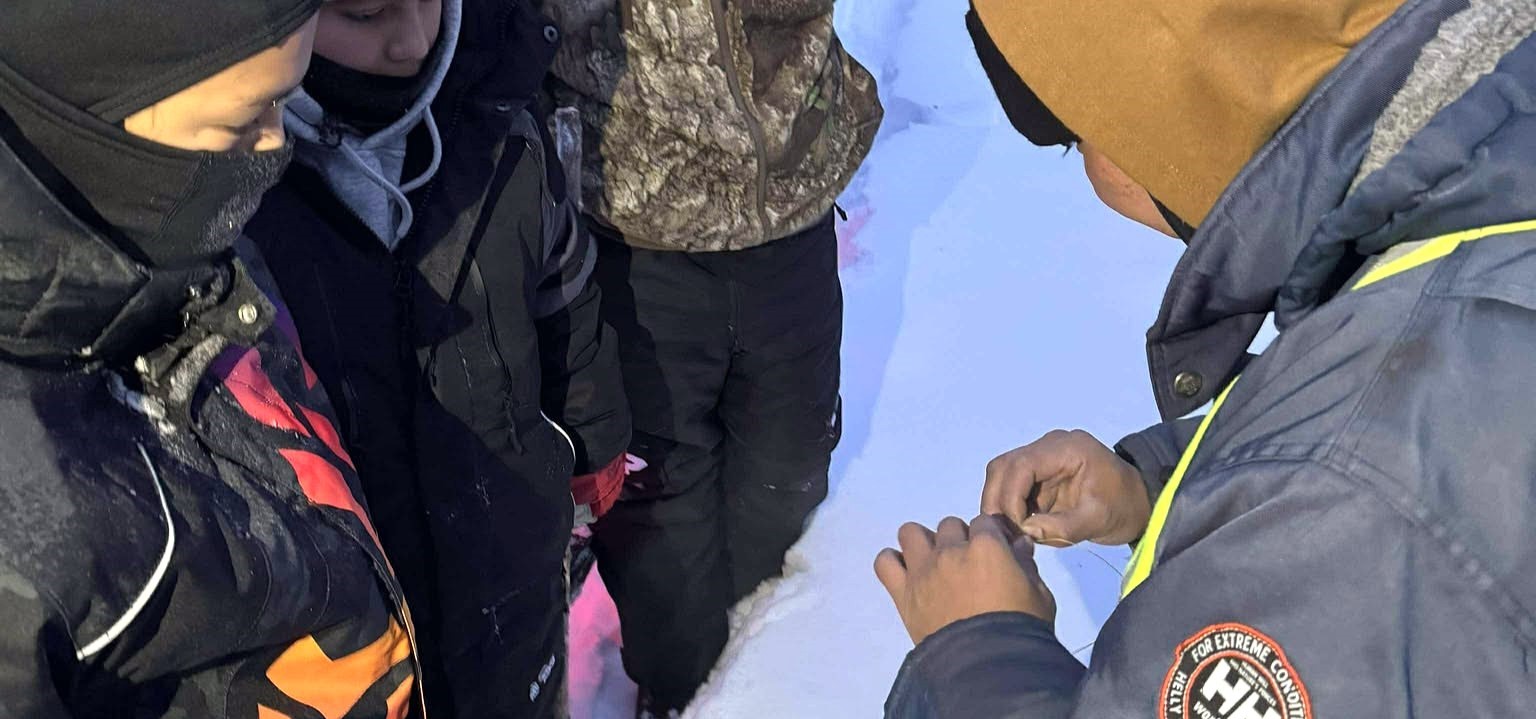Indigenous and Inuit youth across Manitoba head to Churchill accompanied by mentors to participate in the traditional annual goose hunt.
By Chantal Marie Schromeda
Driving out to the isolated terrain near the Hudson’s Bay, traditional Northern harvesters and youth find a blind nestled behind rocky terrain and shrubbery – close to their strategically placed decoys in Churchill, Manitoba.
As flocks of thousands of geese fly overhead, traditional Northern harvester and Food Matters Manitoba’s (FMM) Community Project Coordinator, Myron Cook, takes aim towards the birds making their usual spring migratory trek to the north in search of familiar nesting and populating grounds, and shoots.
As the goose tumbles down, it is one of over 300 birds accumulated over the week of the annual Churchill goose hunt – a week that Cook explains was quickly off to a great start.
“The days were really good for hunting from the get go,” says Cook.

Youth harvesters waiting for geese. Lawrence Saunders
From May 14th to the 18th, Food Matters Manitoba (FMM) supported nearly 30 Indigenous and Inuit youth from across the province of Manitoba as they travelled to Churchill for a week of geese harvesting. Hunting, fishing, trapping, and gathering wild plants, are important foundations of cultural identity in Indigenous communities, and these foundations are important for livelihood, nutrition, health, fitness, and the retention of traditional knowledge, according to the Assembly of First Nations. Goose hunting, in particular, is one of the most important components of the Cree culture, explains FMM’s Executive Director, Demian Lawrenchuk. The youth are accompanied by experienced hunters during the week long harvest who mentor and help facilitate learning as they harvest and process the food to bring back to their communities, he adds. FMM builds upon the ancient goose hunting tradition as the hunters and youth are provided with accommodation, supplies, and equipment needed to hunt for the week – participating in the celebration of life and culture for Northern peoples, adds Lawrenchuk.
Geese hunting is a custom steeped in centuries’ old tradition in Indigenous communities, while also playing an essential role in the establishment of Canada as a country.
“The massive annual harvests of the fatty calorie dense waterfowl was an essential component of the fur trade and the establishment of this country,” says Lawrenchuk.

Harvesting lead Lawrence Saunders. Lawrence Saunders
As large ice sheets receded north into the Hudson Bay, the end of the last ice age opened up new land for the Cree in Northern Manitoba, he adds. The Indigenous peoples moved north into this region thousands of years ago, and life revolved around the seasonal bounties of food springing up throughout the region at predictable times and places throughout the year, he continues. This cycle determined the seasonal migrations of the original inhabitants – this practice, dating back thousands of years, meant families travelled to the Hudson Bay coast to meet the flocks of waterfowl during this peak of the spring migration, explains Lawrenchuk.
“This allowed for stockpiles of food to be stored that would feed the fur-traders and the newly established European communities throughout the year,” he says. It’s a tradition that signifies the Cree new year – a celebration of life as the earth wakes after its long winter sleep, adds Lawrenchuk. “The song of the geese and ducks let us know that soon the waterways will open and the medicines will wake up and begin to grow again,” he says.
Now, the tradition is being passed down to new generations.
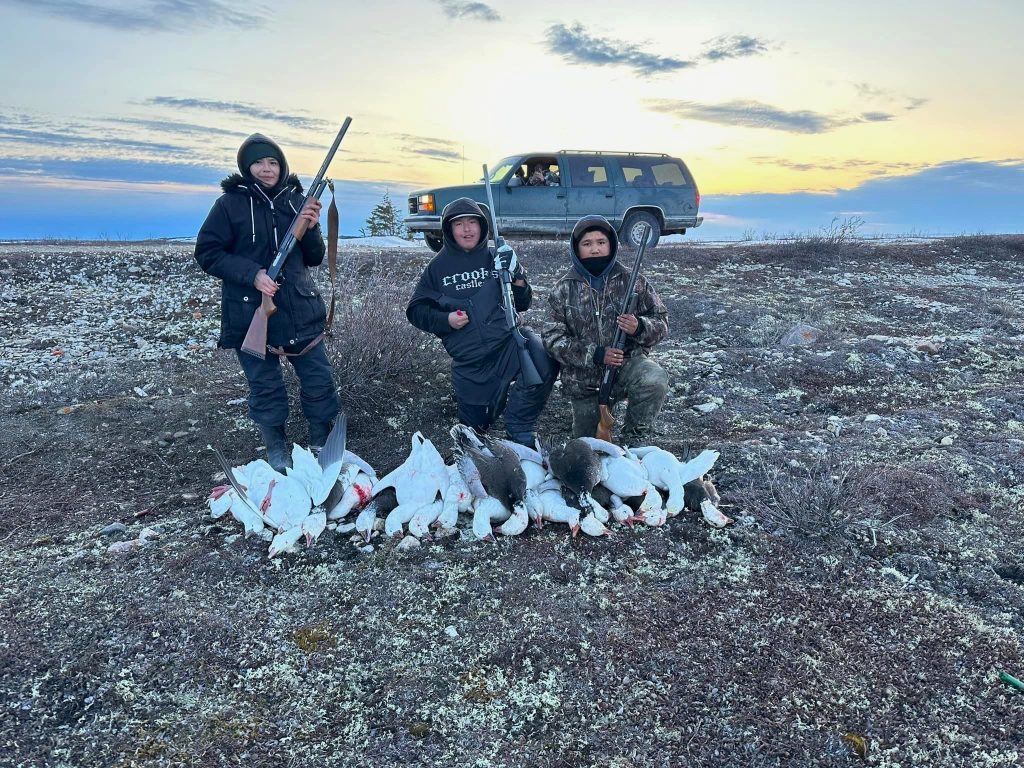
Youth harvesters with some of the harvested geese. Myron Cook
As youth harvester in Makeso Sakahikan (Fox Lake/Gillam), Cameron Saunders, boards the overnight train headed from Gillam to Churchill, there was tangible excitement in the air amongst the youth and the accompanying harvesting mentors.
With the overnight train leaving the Gillam station by 11:30pm, some youth gather around their separating tables to play card games while others fall asleep to pass the time. Just over 9 hours later, Saunders woke to see the train had rolled into the destination – the Churchill station.
With belongings in hand, the youth harvesters and mentors check into their hotel, excited for what the week had in store.
The first harvesting day, Saunders explains he went to find a blind with fellow harvesters so they could start setting up their decoys with wind socks and silhouettes to attract the geese.
“We set up the decoys and shot about thirty of them,” he says. “We had a couple blinds set up and lots of geese kept coming in.”
Paying attention to the relationship between the birds and the wind is vital for a successful harvest.
The geese are like planes, explains Lawrence Saunders, lead harvester and mentor from Makeso Sakahikan (Fox Lake/Gillam). “The wind helps them land a lot better, so you got to adjust your decoys a lot of the time to see which way they want to come in and what works best for them.”
Oftentimes, this is a process of trial and error. “You’ll learn more each year in different areas you try hunting each year,” he adds.
Everyday throughout the harvesting week, as soon as the sun rose before 7 o’clock in the morning, lead harvester Saunders was dressed from head to toe in dark colours and warm gear with hunting equipment in hand and youth in tow. The harvesting days were long, with youth and mentors leaving as soon as the sun rose, and not returning until late into the evening.
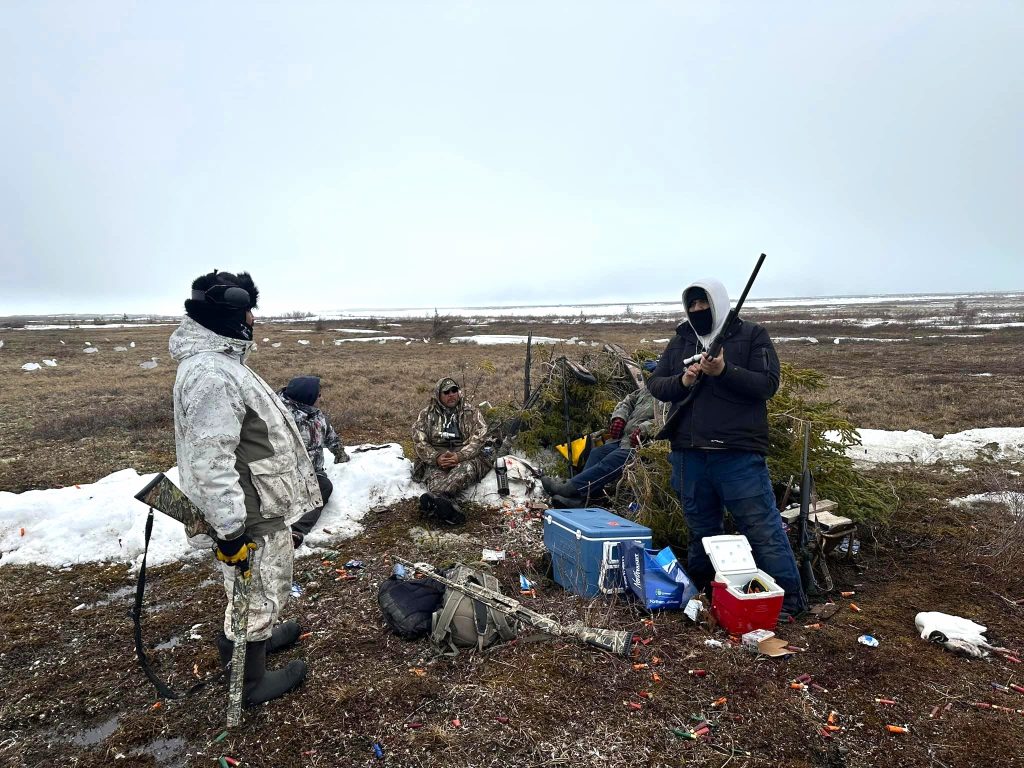
Myron Cook and other traditional harvesters and mentors accompanying the youth. Myron Cook
“We’d usually leave just after 7am, and we’d send one of the guys back to Churchill to grab our lunch for the crew,” he says. “Then we’d stay out until 8 to 9pm daily.”
For youth harvester Saunders, the long days spent in Churchill were full of new and memorable moments, and personal accomplishments.
Mid harvesting week, the youth harvester went to the same blind early. Just after waiting for a couple of hours, the large flocks of geese began to fly in.
“I shot about 15 in the morning and in the afternoon it was slow for a little bit until evenings, and then I shot about 10,” he says. “That was the most memorable moment for me.”

Geese accumulating during the harvest. Myron Cook
As the harvested geese began to accumulate throughout the week, youth harvesters worked together to breast around 100 geese for their communities – a first for Saunders who was eager to pick up the new skill.
“We had two people breast, one person put the geese in garbage bags and two people put the breast in ziploc bags,” he says.
Seeing the youth learn new, valuable skills that will propel them forward as the next generation of harvesters for their community, that they were excited about, was inspiring to see, explains Cook.
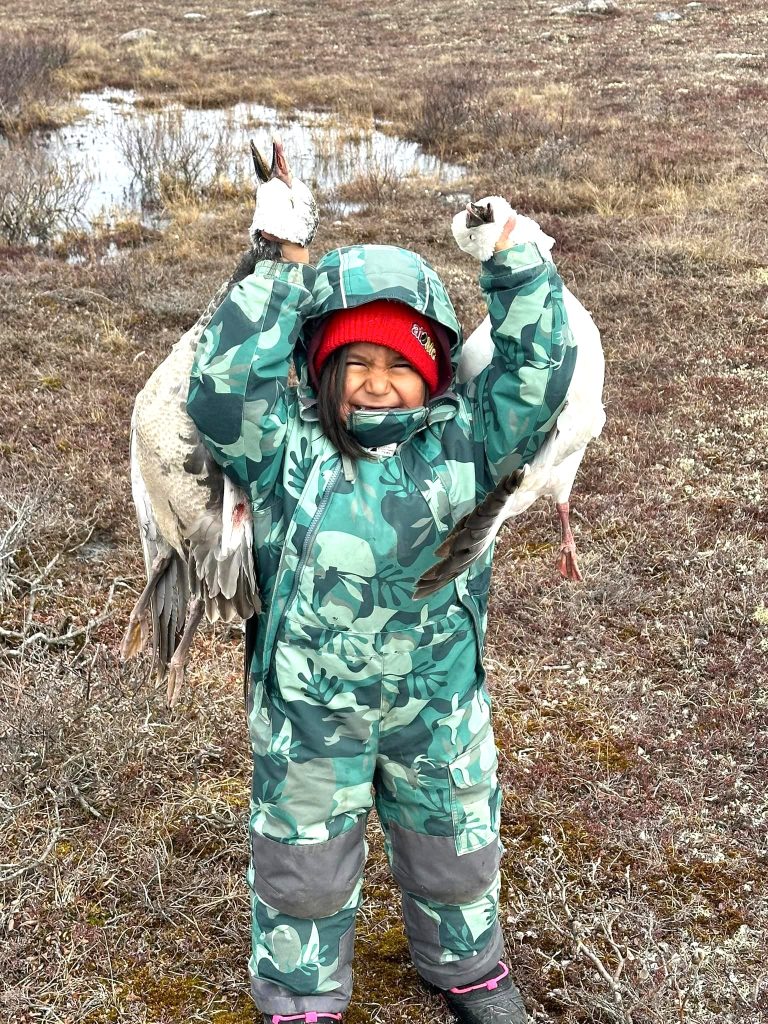
Lawrence Saunders’ son with geese. Lawrence Saunders
“They learnt a lot on gun safety and hunting etiquette,” he says. “We for sure got our future hunters hooked to geese hunting.”
During the final harvesting day, youth harvester Saunders helped the rest of the crew harvest around 20 more geese in the morning before packing up and heading back to the Churchill train station.
“We went to the blind in the morning and it was pretty slow, but we shot about 20ish and then we had to pack everything up around 3ish, and then we bagged everything up and dropped them off at the train station,” he says.
Traditional harvesters and Northern mentors hope the excitement and feelings of accomplishment the youth felt during their week-long harvest continues – so the youth provide for the communities in the future and pass along the traditional knowledge.
“I’m hoping that they continue this lifestyle in the years to come because they’re the future harvesters for the communities,” says lead harvester Saunders.
Indigenous youth’s participation in tradition is vital for their cultural identity and morale, according to a study published in 2000, by the Annual Review of Nutrition.
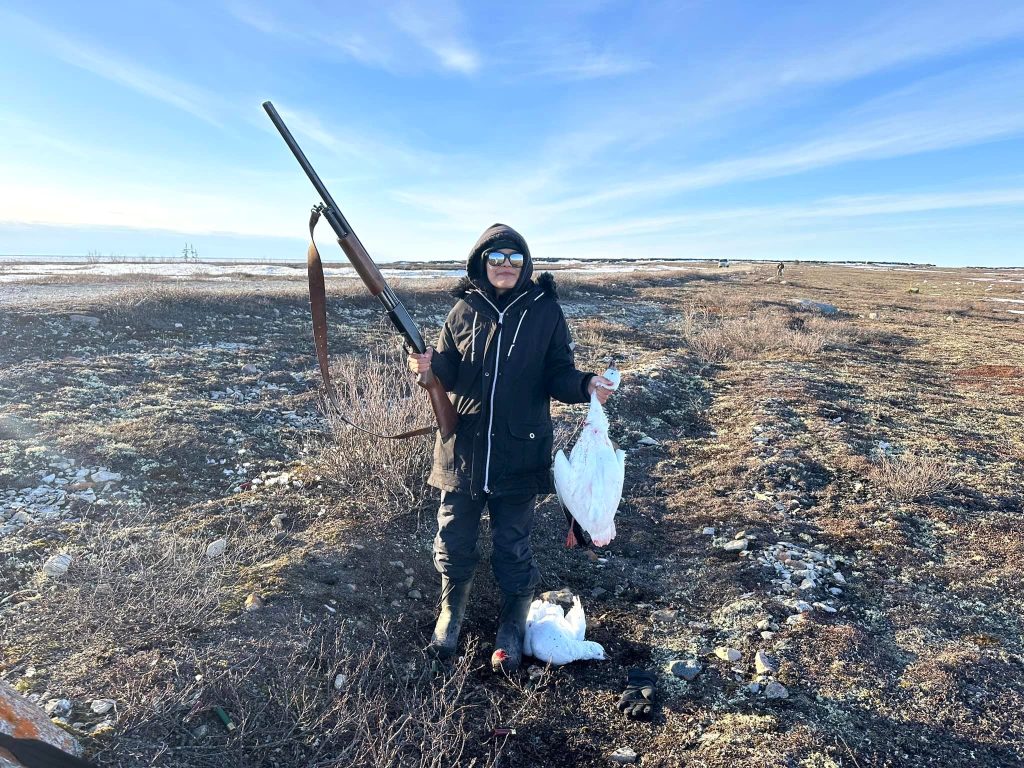
Youth with her harvested geese. Myron Cook
“The goose hunt is a major opportunity for youth living in remote communities to get the chance to travel and connect with the land, their peers and themselves,” says FMM’s Northern Facilitator, Morgan McCurdy. “This adventure gives them the opportunity to learn new skills and have fun while doing it.”
The week-long harvest is also an opportunity for youth from different communities to come together and form meaningful connections. Seeing the youth becoming friends throughout the week was a special moment for the harvesting mentors.
“The best part was seeing the kids go from strangers to becoming friends at the end of the trip,” says Saunders. “They were hunting with each other – laughing and making memories.”
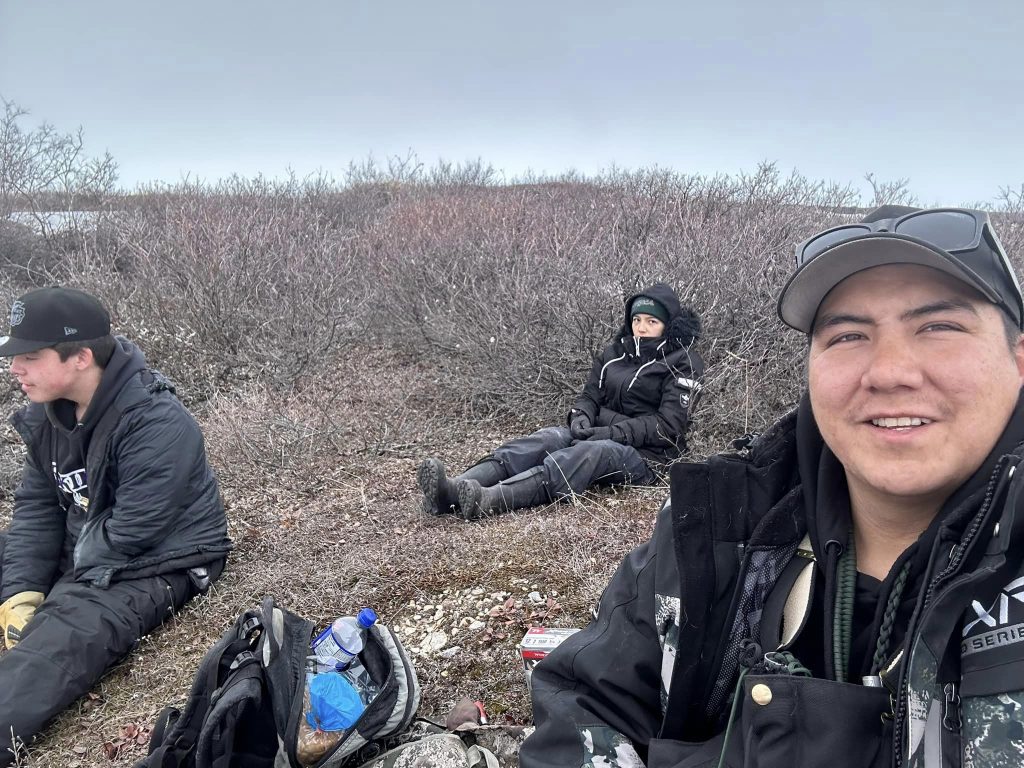
Lawrence Saunders sitting with some of the youth. Lawrence Saunders
McCurdy adds the involvement of harvesting mentors like Saunders has been instrumental to the week’s success.
“Without him on the ground, a portion of this trip wouldn’t run as smoothly as it does,” she says. “The time and dedication put into making sure everything is ready to go once they’re there is invaluable.”
The annual youth harvesting trip has gained traction within the past few years – attracting more participants, explains FMM’s Northern Programs Manager, Myles King.
“Gaining feedback from participants and support from funders, we’ve made this trip accessible for more youth and harvesters,” he says. “We also make sure the experience doesn’t stop in Churchill, as the processing and feasting is just as important.”
Upon returning home to Makeso Sakahikan, youth harvester Saunders got to work helping fellow community members Tegan and Jimmy breast and pluck geese caught during the Churchill harvest at their shop. Once the geese were ready, they were distributed amongst the community to share and enjoy.
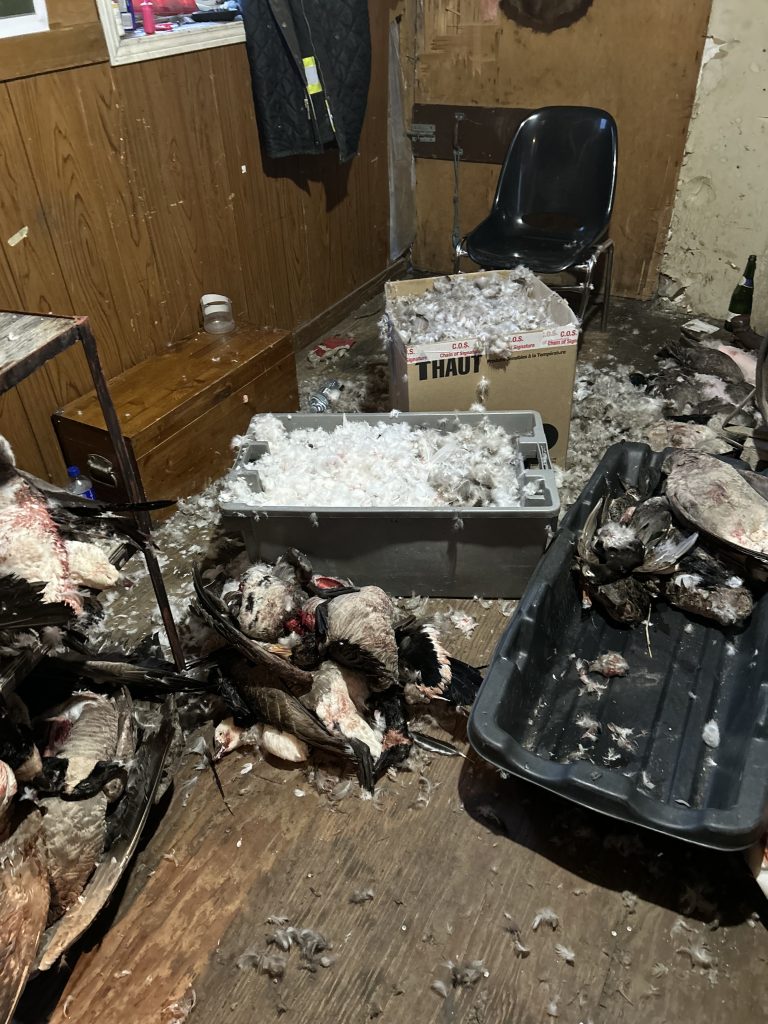
Plucking geese at the shop. Cameron Saunders
“The geese had to be singed and we had to take out the guts out of the rest of those geese, and bagged them up and gave them to the band,” he adds.
While the harvested geese provide communities with a traditional food source, the geese also exemplify important lessons for the youth, explains Lawrenchuk.
Leadership, community, learning how to work together, and sacrifice are all essential skills the youth need for their individual and communal success, he adds.
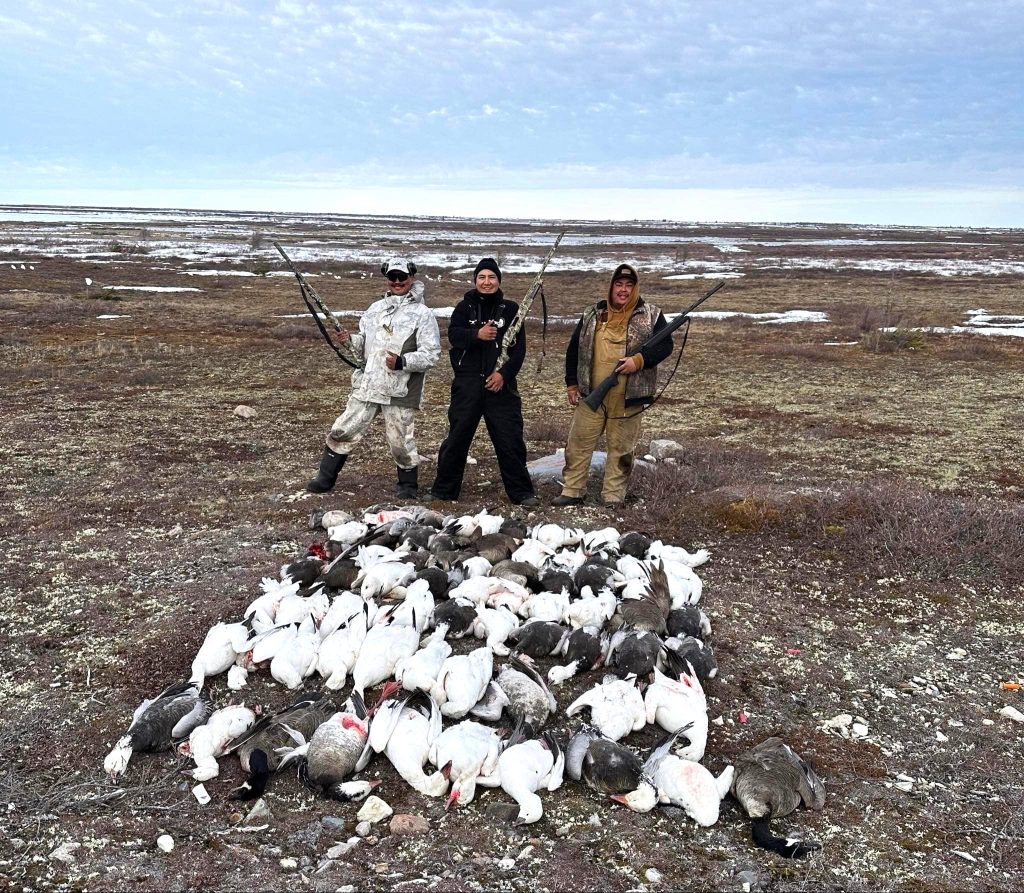
Harvesting mentors with harvested geese for the community. Myron Cook
Despite some unfavourable windy and wet weather conditions during a few mornings, mentors Saunders and Cook say the harvesting trip was a success and went off without a hitch.
Returning home with new skills, memories, and some new friendships, youth and mentors alike are looking forward to next season’s traditional harvest.
It’s a tradition that Lawrenchuk explains he’s proud to be able to continue supporting.
“It’s an honour to be able to continue this tradition of who we are and how we survive,” he says.
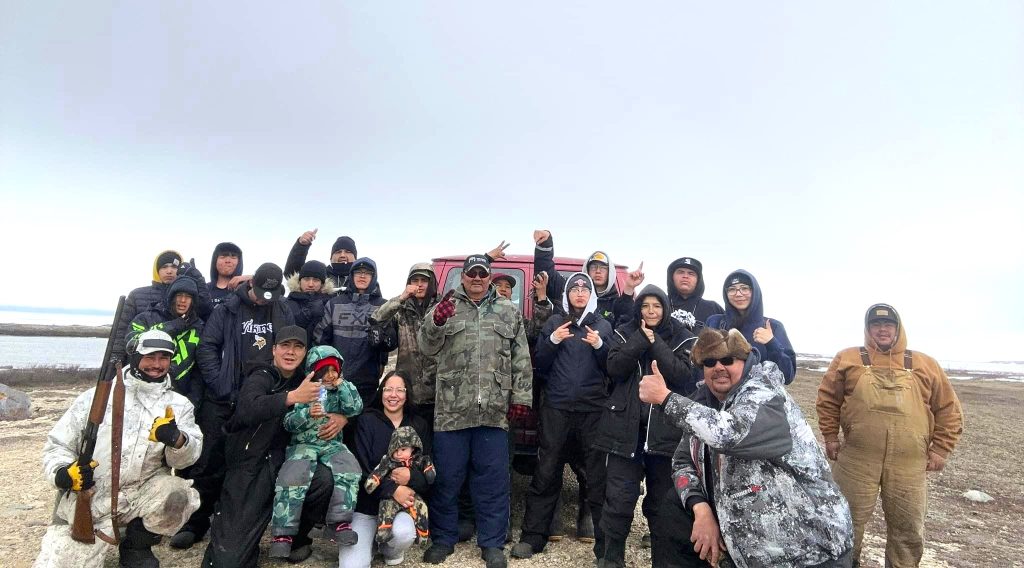
Some of the crew – youth and harvesting mentors in Churchill. Lawrence Saunders




